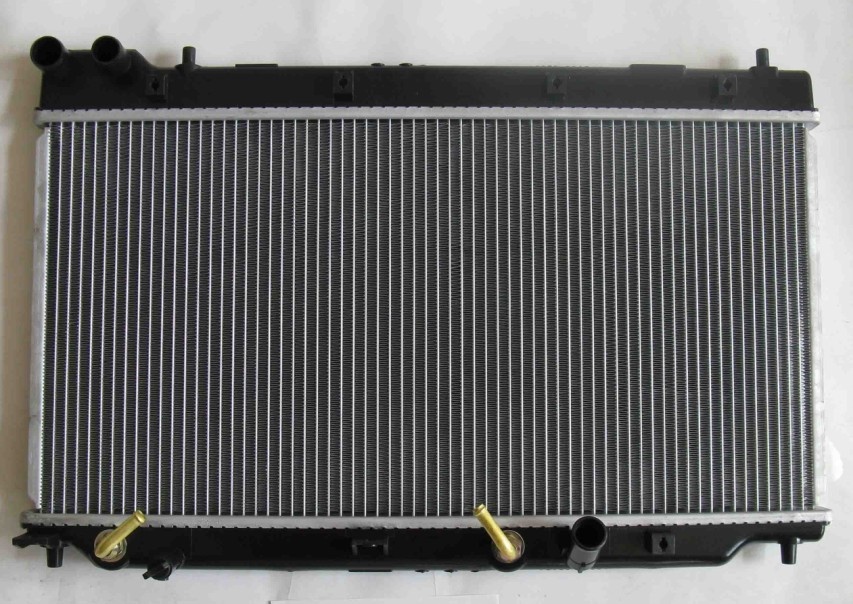Your car’s radiator is one of the most important parts of the engine and is responsible for keeping the motor and other parts of the car at a moderate operating temperature. While car radiator problems may develop gradually or quickly, depending upon the nature of the problem, it pays to recognize the first signs of radiator trouble. This will allow you to solve any problems before they become severe and potentially dangerous.
The first clue toward a radiator problem is your engine temperature gauge. When a car overheats, the radiator is the first point of inspection to determine any possible problem. Such radiator failure could be caused by low or empty coolant level, broken auxiliary fans or malfunction, broken hoses that result in coolant leak or broken, damaged or dirty radiator. To make sure, park the car in a safe place, pop open the hood to allow the engine to ventilate and check the relative components. If you cannot find the problem and the overheating persists, contact the nearest service center or mechanic for their help.
The second sign is a rust accumulation. The radiator is made of metal and is susceptible to rust. It is greatly affected by road debris, salts, humidity and other catalysts that could cause chemical reactions. When this happens, the accumulating rust will slowly eat away at your radiator, effectively lessening this component’s capabilities before completely breaking down. To identify this problem, you need to remove the radiator cap and check the coolant’s color. A brownish fluid would mean excessive rust inside the cooling system and flushing is then recommended. To prevent this problem, use high quality coolant or anti-freeze mixed with adequate amounts of distilled water. Have the radiator flushed at least once a year to prevent accumulation of rust.
The third symptom is radiator leaks. A radiator leak is most often caused by old age and should be repaired or replaced immediately. If any sign of leak is evident on your radiator, have this problem inspected and repaired immediately. If the leak is persistent have the radiator replaced to prevent any problems in the future. It would be a good idea to inspect the condition of your radiator regularly, such as once a week.
Apart from the above signs for troubleshooting, there are several other methods that you can follow.
Check the water or coolant level. Open the radiator cap on a cool engine. You should be able to see the fluid if the radiator has enough. For the correct level, you can consult your owner’s manual. If the coolant quantity is not enough, fill the radiator as needed. A 50/50 mixture of water and coolant can work for best results.
Inspect the condition of the hoses. See if there’s any brittle or cracked sign. Check for leaks in the fittings and see if the seams have been blown.
A thermostat controls how much coolant can flow into and out of the radiator. It helps keep the engine at optimum operating temperature. Look over the thermostat and make sure it’s open and clean, allowing water to pass through it. If it is clean but water isn’t circulating, check for leaks in the water pump.

Car radiator issues and its troubleshooting
by
Tags:
